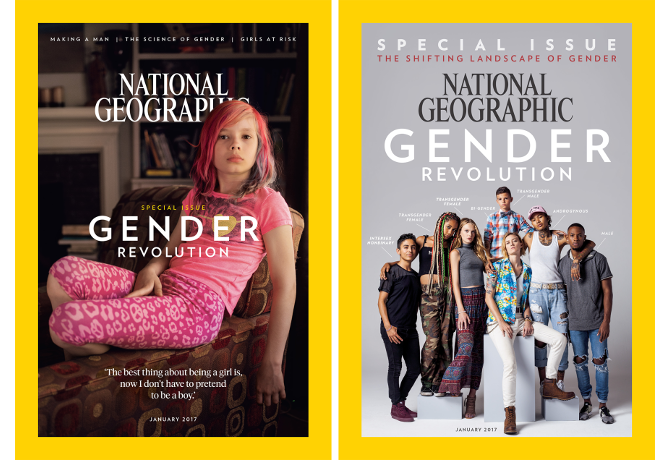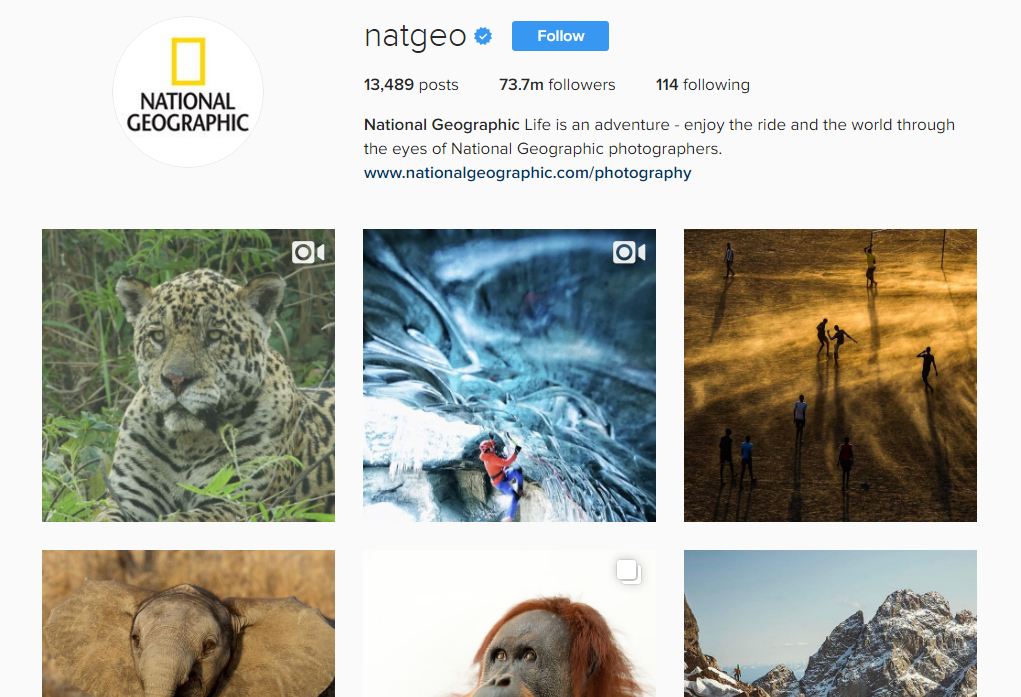National Geographic has emerged as a magnet for climate-conscious, socially liberal and mobile-orientated young consumers. Alex Brownsell reports.

‘Purpose’ is one of the defining marketing buzzwords of our time.
With populism on the march across Western Europe, Donald Trump in situ at the White House, and dubious regimes flourishing around the world, brands are being encouraged to – in essence – pick a side. For some companies this has prompted endless hand-wringing and deliberation; for others, like National Geographic, the situation is far simpler.
Speaking to M&M Global at a London hotel, National Geographic’s editor-in-chief Susan Goldberg insists the brand remains “proudly” non-partisan. However, there can be little doubt that its scientifically-driven editorial stance, particularly regarding the issue of climate change and the environment, has placed it on a collision course with some of today’s most powerful political movements.
A case in point was National Geographic’s January edition dedicated to gender, which featured a transgender girl on the cover of its magazine. The issue sparked unprecedented levels of digital conversation, with some 370 million accessing its gender-related content on social media platforms. It also prompted 7,000 readers to cancel their subscriptions.
Goldberg – a former editor at Bloomberg News – appears phlegmatic on the furore (“it’s good when people talk about you”), but regrets that some readers were unwilling to trust the brand to tackle such a complex and emotive through its traditional “lenses”.
“I do respect people’s heartfelt reactions. The only thing that disappointed me was that some returned the issue still sealed in the polybag. I feel like, if we could have convinced them to open it even for a second, they would have seen how respectively we covered this issue,” she adds.
Of course, Goldberg accepts that political decisions – including President Trump’s latest executive orders on the US’s climate regulations, and its policies on fossil fuels – will have a bearing on National Geographic’s editorial output. Yet she refuses to acknowledge that such content represents a “political stance”.
“With what is going on politically, even though we don’t cover politics, we cover the outcomes of those political decisions. If the [Environmental Protection Agency] starts getting dismantled, if clean water laws start changing, what will come of that? And we will do that in the way we do everything – on the side of facts, on the side of science, and on the side of the planet.”

Like a duck to digital water
Unlike many so-called traditional media brands, National Geographic has taken to the new digital and social landscape like one of the water-bound ducks photographed in its magazines or broadcast on its international TV channels.
Its Instagram page, @natgeo, is the most popular of any media brand globally, reaching well over 70 million users. Few media owners can boast the conveyor belt of image-led content that is perfect for social sharing – and, yes, the most engaged-with posts feature the obligatory menagerie of baby animals.
For Goldberg, National Geographic’s social success is a result of the intimate relationship consumers have with their smartphones, and their hunger for “authentic” storytelling: “When I took this job, people said to me, ‘We love your pictures in the magazine, but how is that going to play on the smaller screen?’ It has proved that is plays out [very well].
“People’s lives aren’t lived in the yellow border of the magazine, but they are lived on those mobile devices”
“One of the reasons it really plays well with people is that, when you look at information on that small screen, there is an intimacy. When you see those pictures, they speak to you in a [unique] way – there is a connection you don’t get with the magazine. I don’t know why. People’s lives aren’t lived in the yellow border of the magazine, but they are lived on those mobile devices,” she says.
National Geographic is now hoping to repeat its Instagram triumph on Snapchat – a platform through which 13 million users access its content each month. The company is producing “more and more” short-form video, claims Goldberg, and its photographers are embracing the creation of 10-second “video snippets” offering behind-the-scenes access to shoots in remarkable locations.
“That is such an opportunity for us,” she adds.

Fox and the hare?
Despite its seeming composure in the online world, it has been a tumultuous few years for National Geographic from a business and operating perspective.
In 2015, brand’s major media assets were taken over by 21st Century Fox in a controversial $725m deal, which upset some who saw it as going against the company’s 130-year ethos and history. Fox took a 73% stake in the new entity, National Geographic Partners, of which Goldberg is editorial director, with 27% of its profits still going back to the National Geographic Society.
Despite the criticism of the new ownership structure over the past 18 months, Goldberg is quick to point to the continuing commitment to fund the Society’s not-for-profit work (“I don’t think there is any [other] media company that can say anything like that”). She also cites the more cohesive, integrated approach to content it has pioneered since commencing the partnership with Fox.
In November, National Geographic released a scripted science fiction drama series, ‘Mars’. The six-part show purports to document first manned mission from Earth to Mars in 2033 (see below), and was accompanied by content across the brand’s print and digital products. A similarly integrated editorial strategy is being used to accompany ‘Genius’, National Geographic’s first scripted anthology series charting the life of innovators such as Albert Einstein, which screens next month.
“One of the things you will see is the way we are partnering across platforms,” says Goldberg. “It is pretty noisy out there, so the more we can get on the same page, the more successful we will be.”
As with many media owners, this cross-platform approach to content is being replicated on the commercial side. Advertisers including Rolex have helped to “underwrite” National Geographic’s storytelling across online and offline channels, something Goldberg insists its audience “understands”, so long as it remains “transparent” in its communication around that content.
“I think we’re all still struggling with the ultimate business model. That continues to evolve and present challenges for print particularly. We are still doing really well, but I think it is fair to say that everyone understands it is a digital future. That is where we have to push forward,” she says.
‘Warm, fuzzy feeling’
While National Geographic is – rightly – being feted for its success on platforms like Instagram, it too faces questions over its ability to develop strong and lasting relationships with promiscuous Millennial consumers, whose swipe-and-scroll approach to content consumption can allow only a fleeting recognition of the publisher or broadcaster.
Goldberg argues that, through a combination of relevancy and “empowered” storytelling, it can capitalise on the “warm, fuzzy feeling” many readers and viewers hold for National Geographic: “I would never want to do stories just to generate headlines or controversy, but I do want to do stories that are relevant and important. Whether it is gender or really explaining climate change that can make people feel empowered rather than hopeless.
“There is huge familiarity and affection that does span the generations, which has surprised and delighted me”
“Even with the youngest readers – reaching us on Snapchat, for instance – there does seem to be this real connection with the brand. Lots of people are exposed to the brand as kids. I do think there is huge familiarity and affection that does span the generations, which has surprised and delighted me,” she adds.
“Lots of people have read [the magazine], and they tell me all the time about grandparents’ shelves full of National Geographic issues. Our challenge now is getting people to look at our content not just in the traditional platforms, but in all the new ways we’re producing it.”







